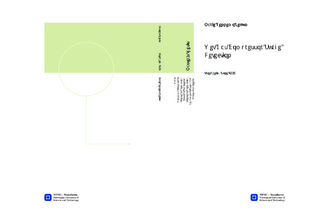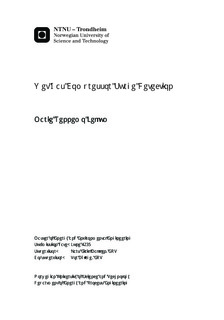| dc.description.abstract | The development of wet gas compressors for installation subsea is key to increase the recovery of oil and gas from the Norwegian Continental Shelf. Safe operation of the compressor depends on understanding of how wet gas affects the behavior of the machine. The compressor operating range is limited by stall and surge, and it is therefore particularly important to determine how liquid will affect the inception of these phenomena. Measuring pressure transients within the compressor or in the inlet and discharge pipe are widely used in experimental investigation of stall and surge. Spectral analysis of the pressure signal is used to detect aerodynamic instabilities in compressor. Pressure measurements are also an important part of the anti-surge control systems, and it is used for continuous condition monitoring of the machine. It is therefore important to determine how liquid affect the pressure measurements.This thesis consists of three main parts. The first part describes and explains stall and surge, and introduces various pressure measurement techniques that can be used to measure pressure transients in centrifugal compressors. Piezoelectric and piezoresistive pressure sensors are well suited to this. They have a wide operating range, high stability and sensitivity, and are very robust. Pressure sensitive paint (PSP) and stress-sensitive films (S3F) are interesting alternatives. These techniques measure global surface pressure, which is very useful when investigating complex flow fields.The second part investigates how wet gas affects compressor stability, and how liquid presence affect pressure measurements in wet gas flows. Results from the test facility for wet gas compression at NTNU have shown that wet gas has a stabilizing effect on the compressor. Unfortunately, it is difficult to interpret the measurements due to large uncertainties around how liquid affects pressure measurements. Liquid presence may cause suppression and/or enhancement of certain frequencies, and also introduce additional frequencies that are specifically related to the dynamic characteristic of the liquid phase. The existing literature on this particular topic is very limited, but evaluation of various multiphase experiments has given some insight. It has been shown experimentally that droplets entrained in a gas phase dampen out pressure fluctuations. High frequency components will be most affected, but experiments have also shown significant dampening of frequencies down to 100 Hz. The presence of a liquid film is believed to cause amplification of random frequencies in the lower frequency range. Turbulence and vortex formation causes a chaotic and highly dynamic flow pattern in the film, and this will affect the pressure measured at the wall. The liquid film will also reduce the performance of PSP and make the use of S3F more complicated. Piezoelectric and piezoresistive pressure sensors will not be directly affected. To increase the understanding of how liquid affects the pressure measurements in wet gas flows an experiment is planned to examine how thin liquid films will affect the surface pressure in wet gas flows. More knowledge in this field is important for future research of wet stall and surge.The economical consequences of stall and surge are massive. In particular if the compressor is installed subsea. Safe running of the compressors is therefore dependent on a anti-surge system that prevents the compressor from becoming unstable. The final part of the report investigates anti-surge control in subsea compression, and how the performance of different systems is affected by liquid. Surge control based on surge avoidance is currently the safest and most reliable technique. However, the performance of these systems is significantly reduced in wet gas compression. Liquid changes the compressor characteristic, and affects the wear and tear of the machine. Liquid presence will also reduce the accuracy of flow, pressure and temperature measurements. By installing dynamic pressure sensors inside the compressor or outside in the connected pipeline, condition monitoring of the machine could be significantly improved. However, due to the challenging subsea environment and the high requirements to sensor performance, it is difficult to finding an optimal sensor is challenging. It is also difficult to determine where the sensors should be installed. This requires knowledge of how the liquid is distributed in the compressor, and will also depend on detailed knowledge of the liquid will affect the pressure measurement | nb_NO |

